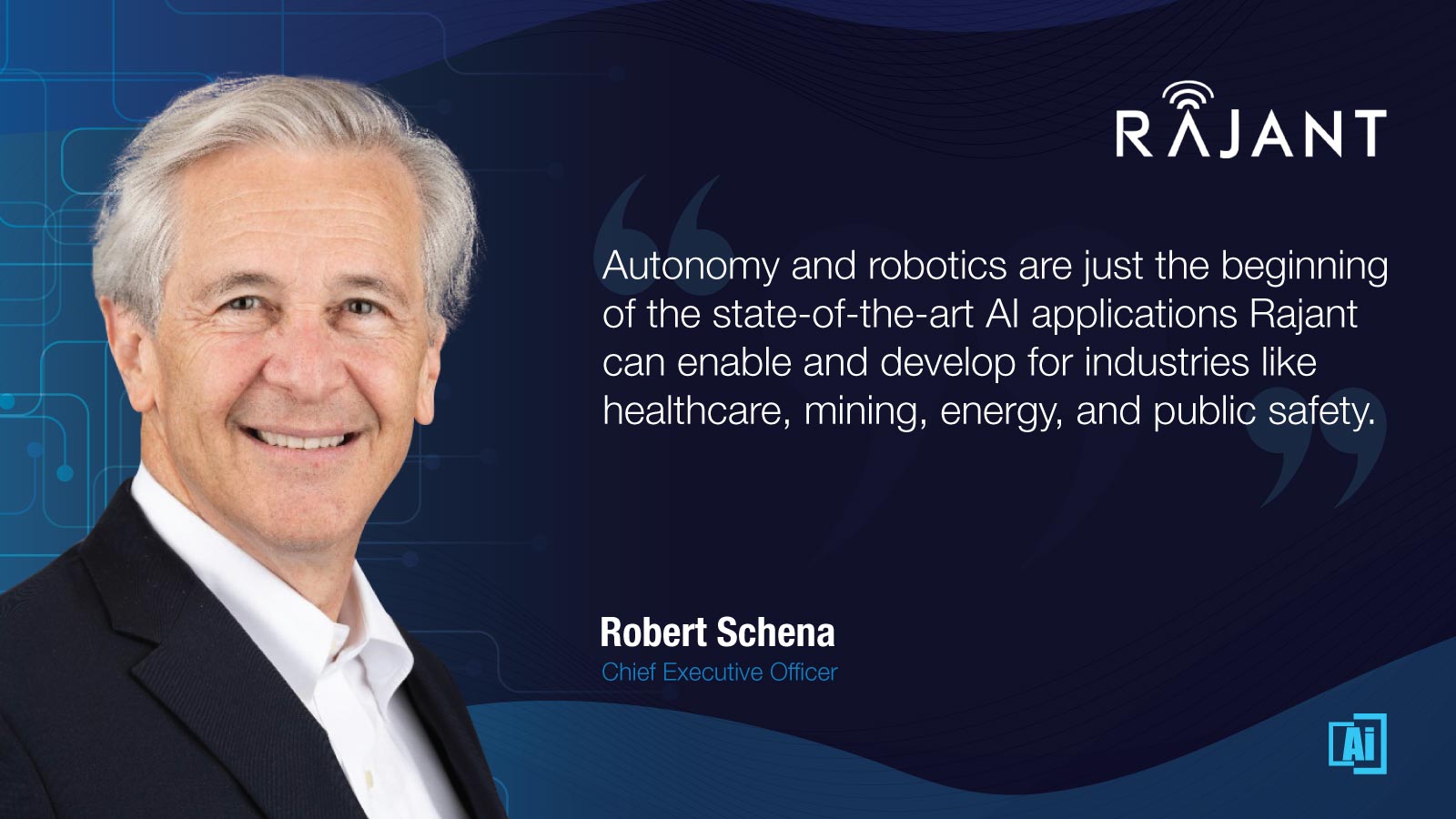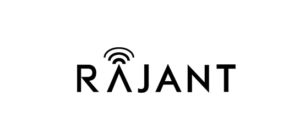AiThority Interview with Robert Schena, CEO and Co-founder at Rajant

Hi, please tell us about your role at Rajant? How did you conceive the idea of starting Rajant Corporation?
The co-founding of Rajant in 2001 by me and Paul Hellhake came about in the aftermath of 9/11 when our country witnessed communication breakdowns when traditional networks were hit by terrorists. Together with a small team of engineers and business development experts, we identified the need for private networking that could effectively support mobile wireless communications under adverse conditions and without infrastructure. What was originally intended to support first responders drew the attention of the U.S. military and then commercially with mining. Rajant pioneered Kinetic Mesh®, the most adaptable, scalable, and readily deployable networking solution on the market today, and expanded to more industries, such as energy, ports, agriculture, and our original target, public safety.
What kind of challenges did you face when you co-founded the company with your partner?
Every entrepreneur faces adversity when launching a company. It is how you overcome it and grow that is the most important part of the process. We started our company during a very tense part of our nation’s history.
Prior to 9/11, our co-founder Paul Hellhake and I were working on new wireless technology for last-mile communications in the telecom industry. After recognizing how our work could address the significant shortcomings of traditional wireless technology—particularly when it came to mobile voice and data networks used by first responders—we redirected our efforts to create a wireless broadband network system capable of the attributes stated earlier. It had to be fully mobile, instantly deployed, self-configuring, and automatically fault tolerant.
In October 2001, one month following the 9/11 attacks, Rajant was established. We envisioned a new, dynamic communications network based on robust InstaMesh® that would deliver on the promises of mobility, scalability, bandwidth, and immunity to failure. InstaMesh is the protocol that seamlessly networks fixed, wireless, and mobile radio nodes together and dynamically redirects traffic between the next best available points if any one peer node is compromised or obstructed. We matched this with the rugged design and tight manufacturing tolerances of the Rajant BreadCrumb radio nodes. In doing so, we delivered on a promise of operating reliably in even the most demanding environments while overcoming the inherent complexities of wireless data networking.
Recommended: Predictions Series 2022: AiThority Interview with Matt Watts, Chief Technology Evangelist, NetApp
During the pandemic months, how did your professional experience and personal demeanor enable you to overcome the challenges? What was the most crucial lesson you learned during these months?
In the pandemic, we’ve had to change the way we do business. The most telling was further opening lines of communication. I hosted bi-weekly small group calls with every Rajant employee. The conversation was two-way where I’d give a state of our performance and operations followed by comments and questions. We enacted similar meetings with our global channel and partners to figure out new ways to help them remain productive and helpful to their end-users. We donated networking equipment, meeting HIPAA security standards. This enabled connectivity for hospital emergency response rapid deployment to treat and service the escalating COVID-related patient numbers. Rajant also used our 3D printers to produce masks at a time when supply was limited.
You are the pioneer of Kinetic Mesh. Could you please tell us a bit about this technology? How do you plan to develop this technology as we advance into a matured 5G connectivity environment?
Rajant Kinetic Mesh is unlike any other wireless mesh system. It provides fully mobile broadband connectivity that is simple, instantaneous, and fail-proof in any application – providing resilient communication of video, voice, and data that moves and evolves with connectivity demands.
Through our patented Kinetic Mesh, Rajant brings to life extraordinarily agile and adaptable wireless mesh networks and a broadband solution that thrives in today’s diverse, ubiquitously mobile environments.
5G, the fifth-generation mobile network, promises things like significantly higher performance and improved efficiency that can connect pretty much everyone and everything. While it is true that next-gen 5G will take advantage of higher frequencies to deliver data rates faster than 4G, there are still 5G network disadvantages. It isn’t the silver bullet of connectivity for OEMs and their customers.
These frequencies have a much shorter range and require line-of-sight, meaning more towers are needed—escalating deployment and maintenance costs quickly. And it still doesn’t solve the root challenge of LTE in industrial settings—namely, that radio frequency can’t travel through common industrial obstructions like thick steel or rock.
Rajant’s wireless networking creates a more resilient, fully mobile coverage everywhere across an industrial setting. Our network has many nodes—connection points in a communications link—that work peer-to-peer, simultaneously holding multiple connections over multiple frequencies. This creates a phenomenon where hundreds of potential paths to connection are available without throughput degradation or lag. Optimally, nodes can be fixed or mobile and easily deployed on moving equipment to extend coverage in hard-to-reach places. This enables machine-to-machine communications, which can be crucial in many dynamic environments.
Recommended: Predictions Series 2022: Interview with Param Kahlon, Chief Product Officer at UiPath
How did you bring technology to the doorstep of the healthcare services industry during the COVID-19 pandemic? Can we safely state that it’s time we prepare for robotics and drones for our public healthcare systems for better coverage and benefits?
Pop-up shelters and field support centers looked to Rajant with greater intensity amid the global pandemic. One example is Rajant joining forces with Western Shelter to provide a safe environment for a frontline response. Running Ethernet cable to every device in temporary spaces is time-consuming and creates safety hazards. Wi-Fi is hard to come by in remote locations; it’s essential to develop more reliable communications options for healthcare and emergency response teams.
Robotics and drones are excellent options to distance the human workforce from unsafe conditions. Safety separation from germs was pushed to the forefront with COVID-19 making robotic platforms, whether automated or semi-autonomous, preferential to putting people on the frontline for many tasks. To enable better coverage and benefits, healthcare systems will find a secure networking solution that scales to their demands anywhere and at any time.
This is my favorite part of the Q&A. Please tell us about your views on Artificial Intelligence (AI) and Machine Learning (ML). How do you envision a more secured and customer-friendly environment in mesh technology with AI and ML applications?
Reliable access to real-time data is critical for AI and ML to be effective. This puts Rajant in the ideal position to enable, develop, and deploy these next-generation applications. Rajant was the first to create an autonomously adaptable network. That innovation spurred Kinetic Mesh to become the ideal platform to unleash the full potential of AI-powered technology and applications today. It is the ideal solution to deliver mission-critical, low-latency connectivity required for AI.
Autonomy and robotics are just the beginning of the state-of-the-art AI applications Rajant can enable and develop for industries like healthcare, mining, energy, and public safety. We’re committed to applying our technology in ways that help our customers solve significant, complex challenges.
You serve a wide variety of industries that are in different parts of the world. Which industries and markets have been the most agile and friendly in adopting your mesh network solutions?
Mining is an inherently risky occupation, with dangers ranging from mine collapses to inhalation of harmful particles. However, it is becoming less dangerous—as robotic technologies pave the way for safer work conditions and more deployment of resourceful solutions.
We work across several industries, but the ones that have mainly adopted our mesh network solutions are those that see an immediate need for it. This includes mining, military, oil & gas, public safety, heavy construction, and other mission-critical areas.
However, we work across many other markets, including warehouse automation, agriculture, amusement events, and other industries requiring our mesh network solutions.
Recommended: AiThority Interview with Yashar Behzadi, CEO and Founder at Synthesis AI
How do you collaborate with partners to build a secured, more robust mesh network infrastructure for your customers?
We collaborate with our partners in a variety of ways and settings. It typically depends on the industry and region we are serving. One concrete example of how we partnered with two other organizations was in a recent, historic mine inspection in the U.S. Working with our technology partner Australian Droid and Robot (ADR) and integration partner PBE Group, we completed the deepest remote underground mine inspection in history. Using ten ADR Explora XL unmanned robots and a wireless below-ground communication network, a mobile infrastructure depth of 1.7 kilometers was achieved to enable the reestablishment of operations at a collapsed limestone mine and restore jobs.
There are countless other examples and partners we work with around the world. You can learn more about them here.
Your advice to young professionals aspiring to join Rajant or the industry you belong to:
Of note is Rajant’s recent and continued growth. During a time of pandemic-related uncertainty, Rajant sought out the talent other organizations laid off. From seasoned veterans to tomorrow’s leaders, we are committed to helping professionals grow. An example of this is the recent Lean Six Sigma certification for nine of our team members. This is the second year in a row following Rajant’s same achievement announced in January 2021. Process phases, which support Rajant’s culture of continuous improvement in engineering and manufacturing. You can read more about that here.
Thank you, Robert! That was fun and we hope to see you back on AiThority.com soon.
[To share your insights with us, please write to sghosh@martechseries.com]
In 2002, Robert Schena co-founded Rajant Corporation, the pioneer of Kinetic Mesh™ Networks. Mr. Schena has successfully grown this once small startup in Wayne, Pennsylvania to have a strong international presence in a broad array of markets including military, industrial, transportation, utilities, and telecommunications. Today, Rajant is doing business in over 50 countries with large global partners and has offices across the U.S., including offices in Pennsylvania, Arizona, Kentucky, and Alabama.
Rajant Corporation is the broadband communications technology company that invented Kinetic Mesh networking, BreadCrumb wireless nodes, and InstaMesh networking software. With Rajant, customers can rapidly deploy a highly adaptable and scalable network that leverages the power of real-time data to deliver on-demand, mission-critical business intelligence. A low-latency, high-throughput, and secure solution for a variety of data, voice, video, and autonomous applications, Rajant’s Kinetic Mesh networks provide industrial customers with full mobility, allowing them to take their private network applications and data anywhere. With successful deployments in over 70 countries for customers in military, mining, ports, rail, oil & gas, petrochemical plants, municipalities, public safety, agriculture, and warehouse & factory automation. Rajant is headquartered in Malvern, Pennsylvania with additional facilities and offices in Arizona and Kentucky.


Comments are closed.